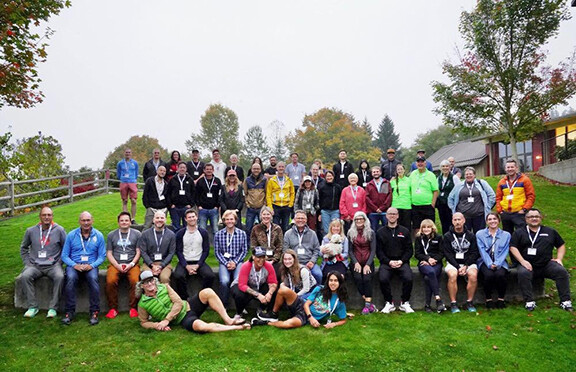For years, when Bryce Whiting was asked what was the latest, greatest thing in running, he would always say, “Stand-up biking, of course.”
ElliptiGO, a Solana Beach, CA, company, launched the first stand-up bicycle in 2010. Those first stand-up bikes were essentially rolling elliptical machine on wheels — with gears and brakes but no seat. The company made a strong pitch to runners because of the way the human-powered contraptions mimicked the motions of running mechanics without the harsh impacts of continual footstrikes, says Whiting, the company’s VP–marketing and sales.
Quirky as its products might look, the company got off to a pretty good start, growing to six models, selling more than 26,000 units and expanding its dealer base to 180 running, bike and outdoor shops over the past nine years. While it created an entirely new niche in fitness, stand-up biking’s early success was tied to the notion that it combined the best aspects of cycling, running and gym training in a form of low-impact exercise that builds cardiovascular fitness.
This spring, ElliptiGO is taking its newfangled fitness machines off-road with the release of its Mountain Stand Up Bike (MSUB). While it looks and is built like a performance-oriented mountain bike with no seat – and essentially it is – it offers more of a full-body workout than mountain biking, burns 33 percent more calories than cycling, mimics the motions of running and offers a parallel experience to trail running.
The MSUB has 27.5-inch wheels, knobby tires, disc brakes, a front suspension shock with 100mm of travel and a 10-speed derailleur, but Whiting admits the componentry is modest to keep the price down and to not overcomplicate it for consumers with non-technical backgrounds. The MSUB has custom pedal crank arms that are easier on the knees than a traditional bike, he says.
The MSUB retails for $1499, so it’s not an easy sell to recreational runners. But Whiting says committed trail runners are a big target.
“We’re not necessarily catering to hobby jogger runners, but committed trail runners,” he says. “A lot of trail runners have mountain bikes because they like to mix it up and they like exploring out on the trails. There’s a small niche in a small community, but it exists.”
Numerous high-profile trail runners have tried out the MSUB with positive reactions, including Anita Ortiz, Dean Karnazes and Zach Miller. Miller, a pro runner sponsored by The North Face, has been riding one on the high-altitude trails on Pikes Peak to supplement his training for ultra-distance running races. Several other elite trail runners, Addie Bracy, Corey Connor and Jason Schlarb among them, have been using other versions of ElliptiGO bikes for years.
Peter Maksimow, the outreach and partnership specialist for the American Trail Running Association has been riding an MSUB on trails around Colorado Springs while recovering from injuries that limit his running.
“It’s really fun,” Maksimow says. “I went on a gnarly ride in Red Rocks Open Space and I kept up with the mountain bikers. It handles the trails really well.”
ElliptiGO launched a more general fitness, pavement-oriented Stand Up Bike ($799) last winter and has experienced greater-than-expected sales, Whiting says. It will also be launching an indoor training accessory so users can bring their bikes indoors.
Whiting believes huge growth in alternative fitness products and experiences related to running and cycling – including Peloton, Strava and Zwift – suggests more growth for stand-up biking.
“We’re still creating this category by ourselves, so it’s not easy,” Whiting says. “But we have a pretty fanatical community. There is too much positive traction to make us not think it’s still a great opportunity. We’ve only started to tap into the general fitness enthusiasts and health-conscious consumers who might or might not by a cyclist or a runner but still want an efficient workout in a fun, comfortable way.”







